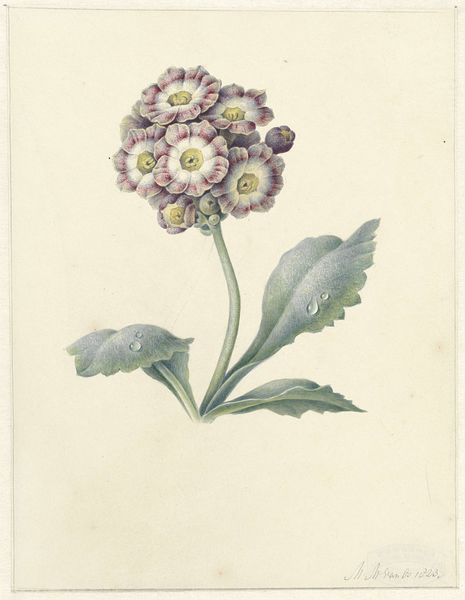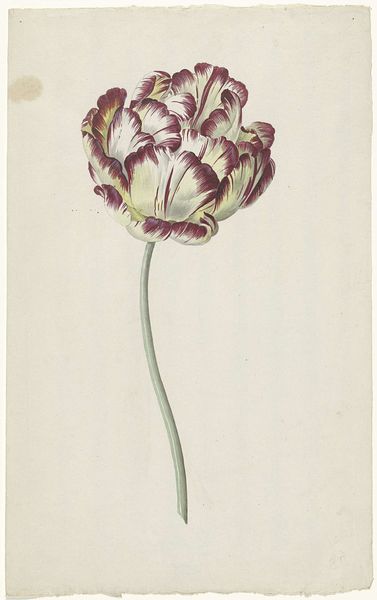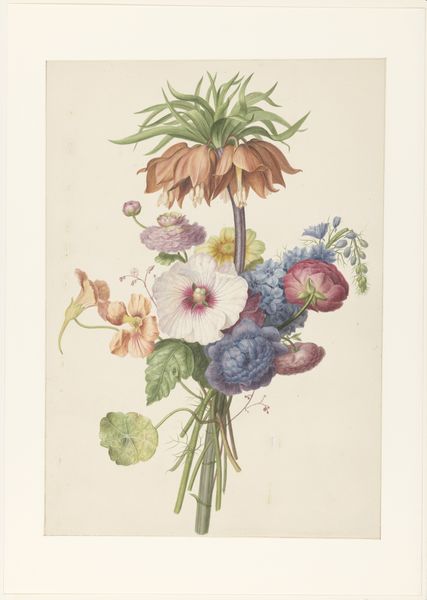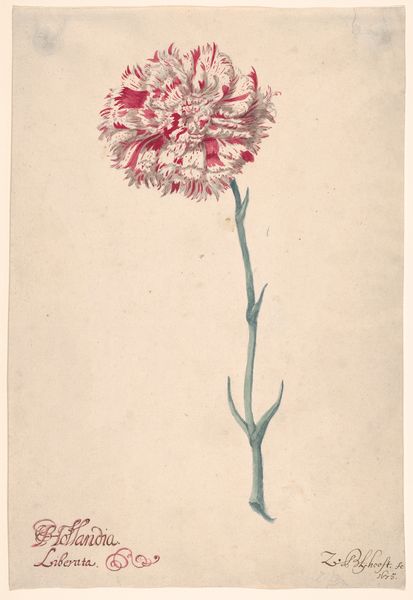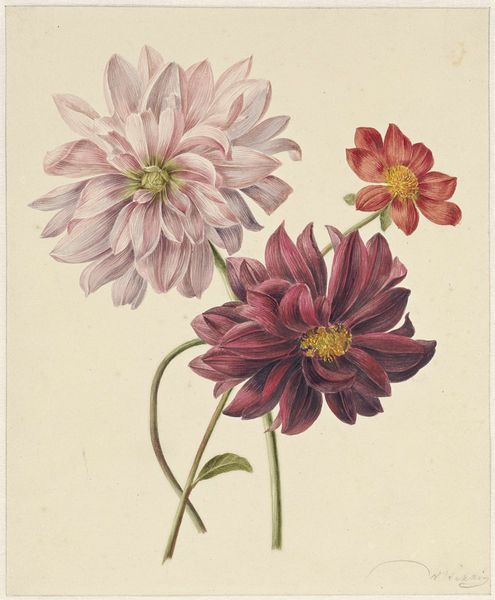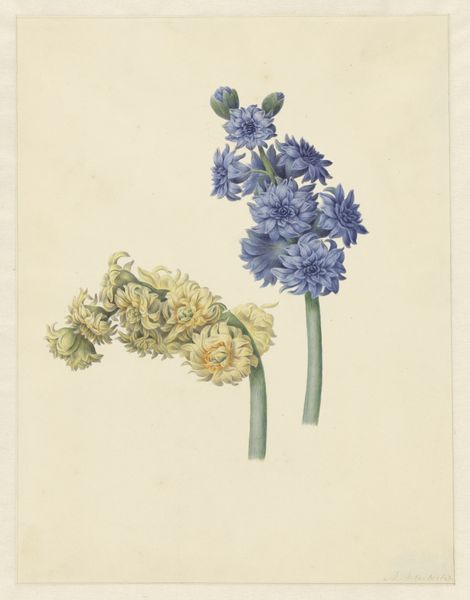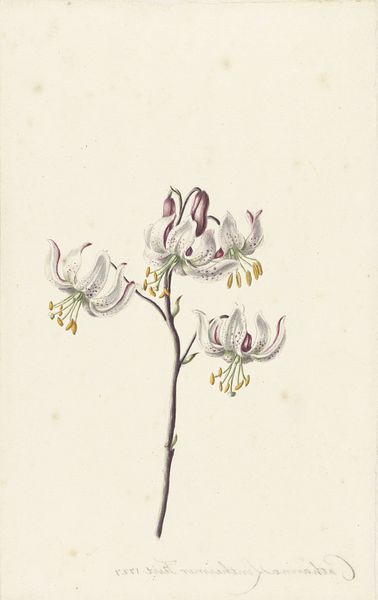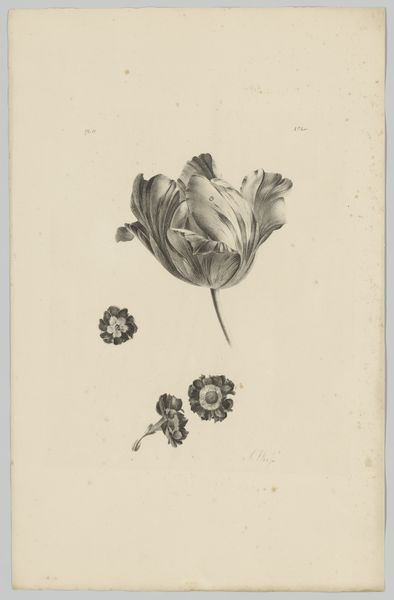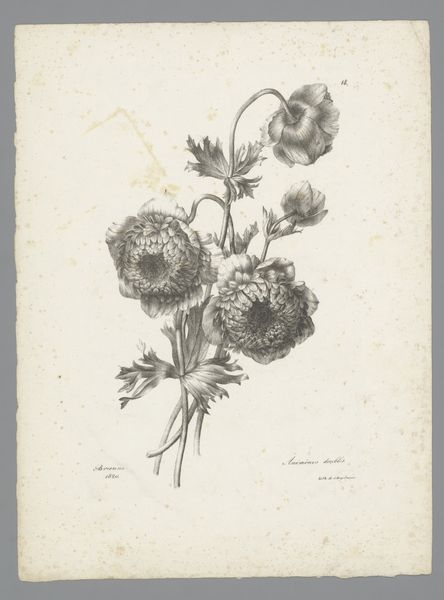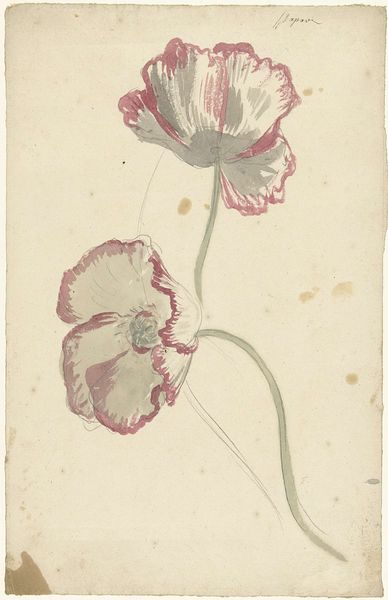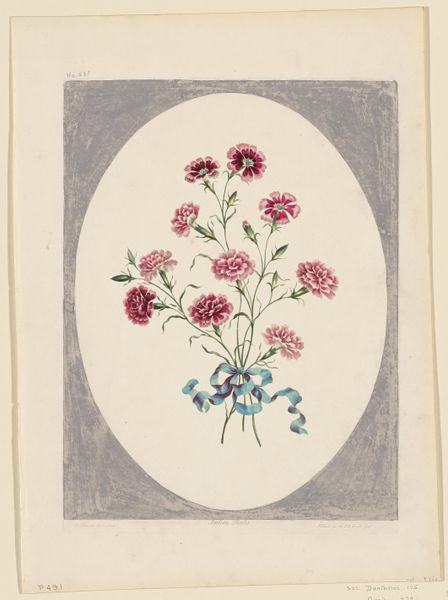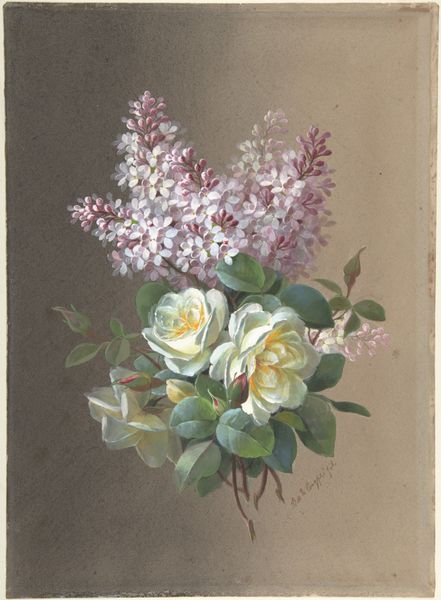
drawing, watercolor
#
drawing
#
watercolor
#
romanticism
#
ceramic
#
botanical art
#
watercolor
Dimensions: height 159 mm, width 155 mm
Copyright: Rijks Museum: Open Domain
Curator: This delightful artwork, titled "Bloemenstudie," which translates to "Flower Study," comes to us from Maria Margaretha van Os, and dates between 1790 and 1862. Executed in watercolor, it presents a detailed botanical rendering. What strikes you first about this piece? Editor: I'm immediately drawn to the muted, almost melancholy color palette. The shades of green and brownish-purple create a surprisingly somber mood, a very tangible departure from conventional floral studies. Curator: Indeed. The tonal values employed give the bloom a textural presence that's further enhanced by the artist’s command of her medium. Notice how the meticulous application of watercolor results in a gentle diffusion of light across the petals, rendering both their form and unique color variations. The central white orbs surrounded by speckles draw one's eye. Editor: The handling of watercolor is interesting from a material perspective. The translucence allows light to pass through the pigments, creating this lovely luminosity and hinting at the layers of labour embedded in creating this almost photorealistic piece. I wonder what particular cultural or even scientific forces were at play at the time, causing van Os to study this flower with such attentive focus. Curator: Consider also that the piece coincides with the Romantic movement; and how, structurally, the bloom takes near center position against the background allowing one to appreciate the work almost independent of context. The romanticism of the piece comes not only from van Os' precision but the soft lighting techniques she employs. Editor: You're right to mention the Romantic impulse! Beyond aesthetic enjoyment, such studies informed developing botanical knowledge and emerging class structures that tied directly into colonial projects. Watercolor lends itself particularly well to portability which in turn enhanced botanical discovery efforts. Curator: Thank you for broadening my appreciation of the materiality and historical implications embedded within it. Editor: And thank you for illuminating aspects of formal structure that had previously gone unnoticed to me.
Comments
No comments
Be the first to comment and join the conversation on the ultimate creative platform.
